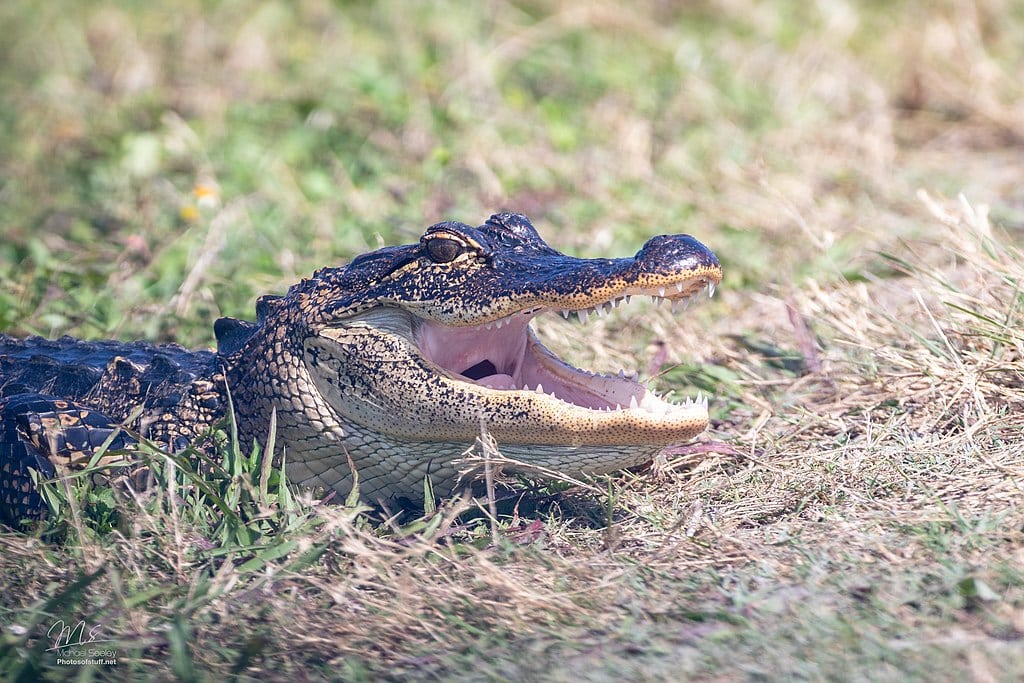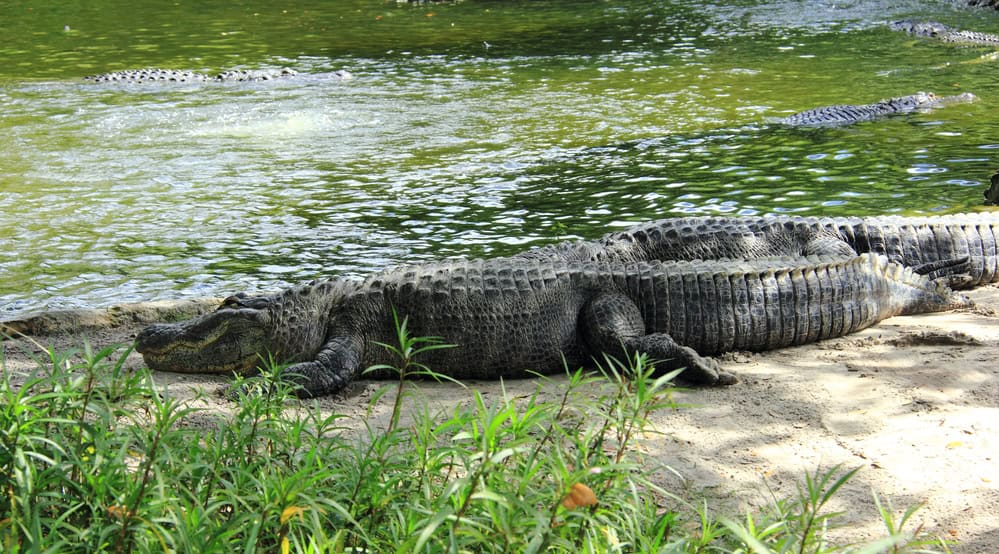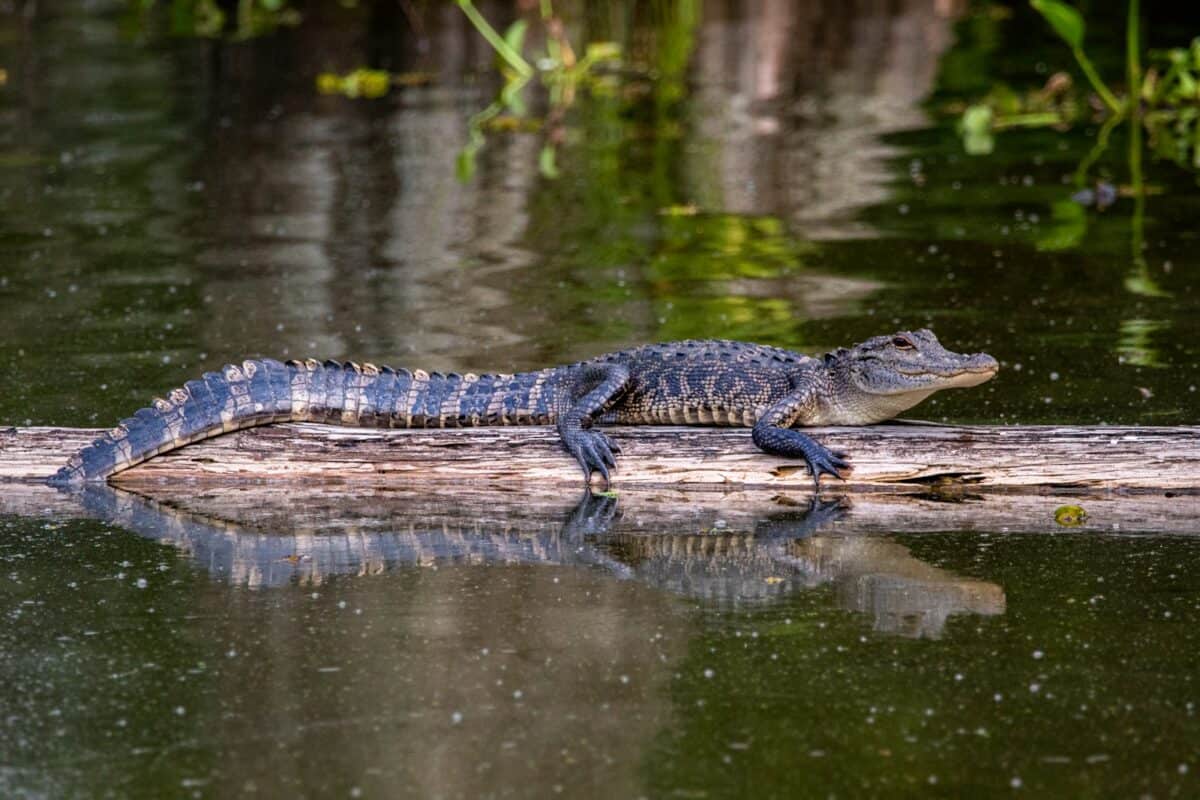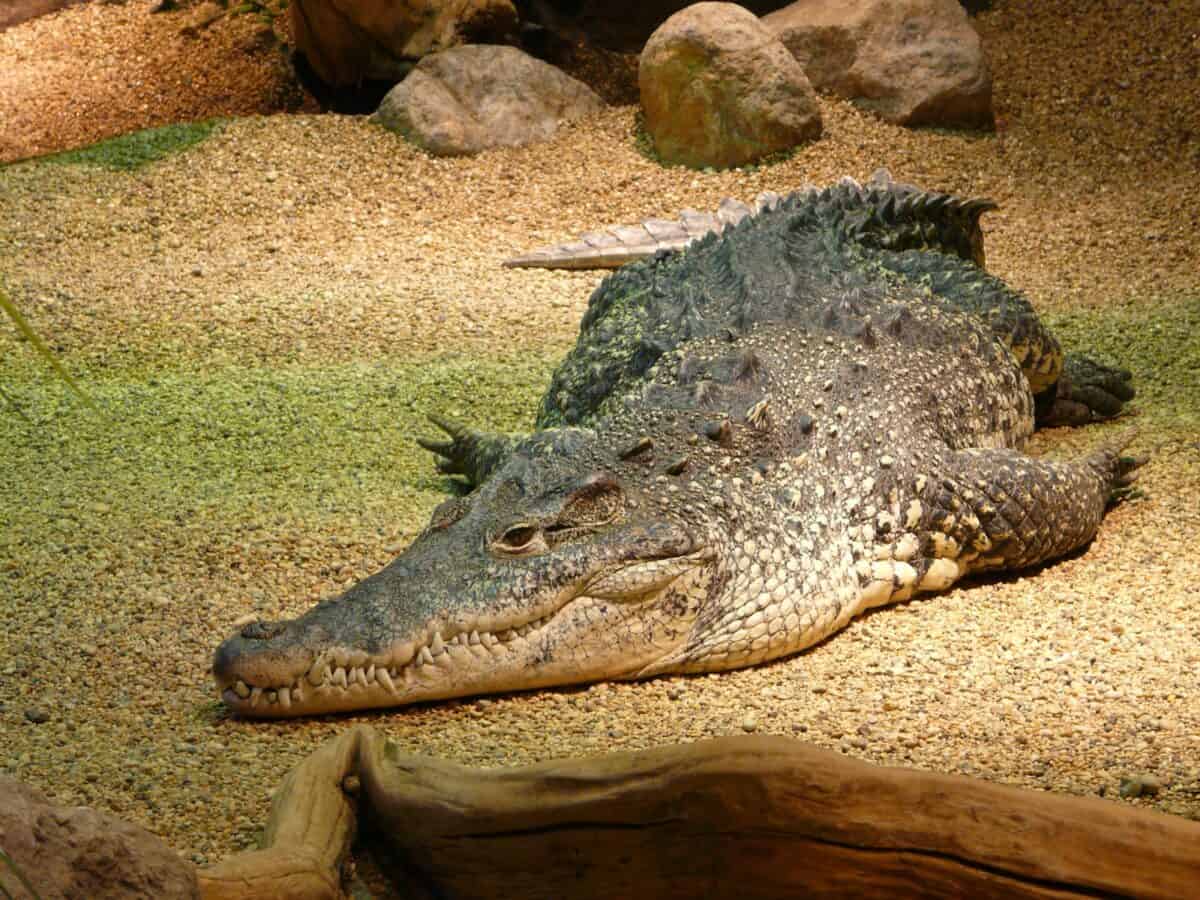Alligators have roamed Earth’s waters and wetlands for over 85 million years, surviving the mass extinction that wiped out the dinosaurs and countless environmental changes. These remarkable reptiles have evolved into perfect predators through a combination of specialized physical adaptations and fascinating behavioral traits. Their survival through the ages isn’t merely luck—it’s the result of finely-tuned behaviors that have made them one of nature’s most successful designs. From sophisticated hunting techniques to complex social interactions, alligators demonstrate remarkable intelligence and adaptability that have secured their place as apex predators. This article explores 15 key behaviors that have allowed alligators to thrive for millions of years, offering insight into how these ancient reptiles have mastered the art of survival.
1. Stealth Hunting Techniques

Alligators are masters of patience and stealth when hunting. They can remain motionless in water for hours, with only their eyes and nostrils breaking the surface—a position known as “eye-shine.” This minimal exposure makes them nearly invisible to prey approaching the water’s edge. When an opportunity presents itself, an alligator can explode from this stationary position with surprising speed, using powerful tail thrusts to propel forward and capture prey with their massive jaws. This ambush strategy works because alligators can hold their breath underwater for 1-2 hours when resting, allowing them to remain perfectly still while waiting for the perfect moment to strike. This patience-based hunting approach conserves energy and maximizes success rates, particularly when targeting mammals and birds that come to water sources.
2. Thermoregulation Through Basking

Unlike mammals, alligators are ectothermic (cold-blooded), meaning they cannot regulate their body temperature internally. Instead, they’ve developed sophisticated basking behaviors to control their temperature. During cooler periods, alligators bask in direct sunlight with their bodies positioned to maximize solar absorption, often with their mouths open to release excess heat. When temperatures rise too high, they retreat to water or shaded areas. This behavioral thermoregulation allows alligators to function efficiently across a range of environmental conditions and seasons. By maintaining optimal body temperatures through basking, alligators can support critical physiological functions including digestion, immune response, and metabolic efficiency—all without expending the enormous energy mammals require for internal temperature regulation.
3. Death Roll Feeding Mechanism

Perhaps the most iconic alligator behavior is the death roll—a specialized feeding technique where the alligator grabs prey in its powerful jaws before rapidly spinning its entire body along its longitudinal axis. This violent rotation generates tremendous torque, helping to dismember prey too large to swallow whole. Studies have shown that alligators can generate rotational forces exceeding 2,000 pounds during a death roll. This behavior serves multiple purposes: it overwhelms prey resistance, tears manageable pieces from larger carcasses, and disorients prey attempting to escape. The death roll represents millions of years of evolutionary refinement, allowing alligators to efficiently process food with minimal energy expenditure and maximize the nutritional return from each successful hunt. It’s particularly effective for breaking down the tough hide and muscle tissue of larger mammals that might otherwise be difficult to consume.
4. Seasonal Dormancy

When temperatures drop below approximately 70°F (21°C), alligators enter a period of reduced activity called brumation—the reptilian equivalent of hibernation. During this state, they drastically lower their metabolic rate, can survive months without eating, and become much less active. Rather than completely shutting down, alligators during brumation maintain some awareness of their surroundings and will occasionally emerge to bask if temperatures temporarily rise. This adaptation allows them to survive seasonal food scarcity and cold temperatures that would otherwise be lethal. In the northernmost parts of their range, alligators have been observed creating “gator holes”—depressions they dig into mud banks where they can retreat during cold snaps, sometimes with just their nostrils exposed for breathing. This strategic dormancy behavior enables alligators to survive in regions with seasonal temperature variations that would otherwise exceed their physiological tolerances.
5. Complex Vocal Communication

Contrary to popular belief, alligators possess a sophisticated vocal repertoire that serves critical social functions. Male alligators produce loud, distinctive bellowing calls during breeding season that can travel over a mile through water and air. These low-frequency vocalizations include infrasonic components below human hearing that create visible water droplet “dances” on their backs during bellowing. Females respond with shorter, higher-pitched calls. Beyond mating calls, alligators produce at least four distinct vocalizations including hisses (warning signals), grunts (territorial messages), coughs (distress signals), and growls (aggressive warnings). Research has shown that baby alligators begin vocalizing while still in the egg, producing “umph umph” sounds that signal to the mother when hatching is imminent. This sophisticated communication system facilitates complex social interactions, territorial boundaries, and reproductive synchronization that enhance survival odds for both individuals and the species.
6. Nesting and Maternal Care

Female alligators display remarkable maternal behaviors that dramatically increase offspring survival rates. After mating in spring, females construct elaborate mound nests using vegetation, mud, and debris, carefully selecting locations that balance temperature regulation, flood protection, and predator avoidance. These nests can measure up to 10 feet in diameter and 3 feet in height. During the 65-day incubation period, females remain near the nest, defending it aggressively from potential predators. When the eggs are ready to hatch, the mother responds to the vocalizations of her young by carefully excavating the nest, sometimes even helping hatchlings by gently cracking eggs in her mouth. She then transports the newly hatched young to water in her mouth and continues to protect them for up to two years. This extended maternal care period is exceptional among reptiles and provides critical protection during the vulnerable early life stages when mortality would otherwise be extremely high.
7. Strategic Den Creation

Alligators actively modify their environment by creating “gator holes”—deep depressions they excavate in wetland habitats using their powerful tails and bodies. These dens serve multiple critical functions in alligator survival. During droughts, these holes retain water when surrounding areas dry up, creating refuges not just for the alligator but for numerous fish and aquatic organisms that later become prey. In winter, the dens provide insulation against extreme temperatures. Some alligators maintain complex dens with underwater entrances and air pockets above the waterline. Research in the Florida Everglades has shown that these gator holes constitute essential microhabitats that support biodiversity throughout wetland ecosystems, demonstrating how alligators function as “ecosystem engineers.” This strategic modification of habitat represents a sophisticated adaptation that ensures survival during environmental extremes and maintains a constant prey supply even during challenging conditions.
8. Opportunistic Feeding Strategies

While often portrayed as indiscriminate predators, alligators display remarkable dietary flexibility that contributes significantly to their evolutionary success. They operate as opportunistic feeders, able to adjust their diet based on seasonal availability and local abundance. Young alligators primarily consume insects, amphibians, and small fish, gradually transitioning to larger prey as they grow. Adult alligators have been documented consuming over 40 different species including fish, turtles, birds, mammals, and even smaller alligators. This dietary adaptability allows them to survive in various ecosystems and through changing environmental conditions. Perhaps most impressively, alligators can switch between feast-or-famine feeding patterns—gorging themselves when prey is abundant (sometimes consuming 23% of their body weight in a single meal) and then surviving for months without eating when necessary. This metabolic flexibility allows alligators to thrive in environments with unpredictable food availability.
9. Cooperative Hunting Behavior

While typically thought of as solitary hunters, research has documented instances of coordinated hunting behaviors among alligators. During fish migrations or spawning events, multiple alligators have been observed positioning themselves in semi-circular formations to trap fish in shallow waters. In Louisiana wetlands, researchers have documented alligators working in pairs—one creating disturbance to drive fish toward the waiting jaws of another. Most remarkably, alligators have been observed using tools in hunting: some individuals balance sticks on their snouts during bird nesting seasons, attracting birds seeking nesting material and providing an opportunity for ambush. These instances of coordination and tool use suggest higher cognitive abilities than previously attributed to reptiles. While not as elaborate as pack hunting in mammals, these cooperative behaviors demonstrate behavioral flexibility that enhances hunting success and expands the range of available prey.
10. Territorial Displays and Dominance Rituals

Alligators maintain complex social hierarchies through elaborate territorial displays that minimize actual physical combat while establishing dominance. During breeding season, males perform “head-slaps” where they raise their heads and tails above water and forcefully slap the water’s surface, creating loud sounds and impressive water splashes visible from considerable distances. These displays are often accompanied by subsonic vibrations and infrasound bellows that communicate size and condition to rivals. When two males encounter each other, they may perform parallel swimming displays, inflated posturing, or jaw-gaping challenges. These ritualized behaviors allow individuals to assess competitors without risking potentially fatal injuries from direct combat. The established dominance hierarchies determine breeding access, territory quality, and feeding priorities. By resolving conflicts through display rather than combat whenever possible, alligators conserve energy and avoid injury risks that could compromise survival—a sophisticated conflict resolution system that has evolved over millions of years.
11. Sensory Adaptations and Hunting

Alligators possess extraordinary sensory adaptations that make them formidable hunters in both day and night conditions. Their eyes contain a reflective layer called the tapetum lucidum that enhances night vision by reflecting light back through the retina a second time. This adaptation allows them to hunt effectively in low-light conditions when many prey species are active. Along their jaws, alligators have specialized pressure receptors called integumentary sense organs (ISOs) that can detect minute pressure changes in water—as small as a single drop falling into water several feet away. These sensors allow them to detect prey movements even in complete darkness or murky water. Additionally, studies have shown that alligators can detect the chemical signatures of prey in water from considerable distances. This multi-sensory hunting approach allows alligators to locate and capture prey under virtually any environmental condition, significantly expanding their hunting opportunities beyond the limitations faced by predators relying primarily on vision.
12. Strategic Prey Caching

When alligators capture prey too large to consume in a single feeding, they engage in sophisticated food storage behavior known as “caching.” After making a kill, an alligator will often wedge the carcass under submerged logs or tuck it into underwater bank crevices. The carcass is left to decompose, which serves two purposes: it tenderizes the tough tissues making them easier to tear apart, and the decomposition process helps overcome the alligator’s relatively weak digestive acids. The alligator will return periodically to feed on the softening carcass. Research in the Okefenokee Swamp documented alligators caching prey for up to seven days, protecting their food resource from scavengers and extending the nutritional benefit of large kills. This behavior demonstrates remarkable forethought and resource management, allowing alligators to maximize the caloric benefit from significant hunting successes while minimizing the energy required for dismemberment and digestion.
13. Temperature-Dependent Sex Determination

One of the most fascinating reproductive adaptations in alligators is temperature-dependent sex determination (TSD). Unlike mammals, an alligator’s sex isn’t determined by chromosomes but by the temperature at which eggs incubate. Eggs incubated below 86°F (30°C) produce primarily females, while temperatures above 93°F (34°C) produce mostly males. Temperatures in between result in mixed-sex clutches. This system allows alligator populations to naturally adjust their sex ratios in response to environmental conditions. During prolonged warming periods, more males are produced, while cooling trends generate more females. Female alligators appear to actively manage this process by selecting nest sites with specific temperature profiles and adjusting the composition of nesting materials to influence heat retention. Some mothers have been observed opening or covering nests to regulate temperature during incubation. This reproductive flexibility has likely contributed significantly to alligators’ survival through dramatic climate shifts over millions of years, allowing population adaptation without requiring genetic changes.
14. Aestivation During Drought

In addition to their cold-weather dormancy, alligators have evolved specialized behaviors to survive extended drought periods. When wetlands dry up during severe droughts, alligators enter a state called aestivation—a dormancy period triggered by dry conditions rather than cold. They excavate deep burrows in mud banks that can extend up to 65 feet in length, creating chambers that retain moisture even as surface waters disappear. Inside these burrows, alligators reduce their metabolic rate by up to 70%, allowing them to survive months without food or fresh water. Their specialized physiology enables them to recycle nitrogen waste products rather than excreting them, conserving precious body water. Remarkably, some alligators in the Florida Everglades have been documented surviving in these burrows for over eight months during extreme drought conditions. This drought-survival adaptation has allowed alligator populations to persist through periodic water shortages that would otherwise cause mass mortality, demonstrating their extraordinary resilience to environmental extremes.
15. Group Feeding Frenzies

When concentrated food sources become available, alligators demonstrate a remarkable shift from their typically territorial nature to engage in cooperative group feeding behaviors. During fish spawning runs or wildlife migrations that create abundant prey, multiple alligators—sometimes dozens—will gather to feed simultaneously. These feeding aggregations involve sophisticated social dynamics where larger individuals typically feed first, followed by progressively smaller animals in a relatively orderly sequence. Unlike the chaotic feeding frenzies seen in some shark species, alligator group feedings typically involve minimal aggression between individuals. Research in the Everglades has documented alligators forming semi-circular barriers across narrow waterways during seasonal fish migrations, with individuals positioned at regular intervals to maximize capture efficiency. These temporary feeding coalitions demonstrate behavioral flexibility that allows alligators to capitalize on abundant but time-limited food resources, significantly enhancing their energy acquisition during critical seasonal opportunities.
Conclusion Nature’s Perfect Survivor

The remarkable behavioral adaptations exhibited by alligators reveal why these ancient reptiles have survived for over 85 million years while countless other species have disappeared. From their sophisticated hunting techniques and social behaviors to their environmental engineering and reproductive strategies, alligators demonstrate an extraordinary suite of adaptations that have allowed them to thrive through dramatic climate shifts, habitat changes, and competition with newer predator species. Their success stems not from specialized adaptation to a narrow ecological niche, but rather from behavioral flexibility that allows them to adapt to changing conditions. As we continue to study these living fossils, we gain deeper insights into the dynamics of long-term evolutionary success and the remarkable adaptive potential of reptilian cognition. Alligators stand as testament to the power of behavioral adaptation as a survival strategy—having outlasted the dinosaurs and countless mammalian competitors through behaviors refined over tens of millions of years of evolutionary pressure.
- The Most Beautiful Bird Migration Routes Across the US - August 9, 2025
- 14 Dog Breeds That Love to Cuddle - August 9, 2025
- 11 Signs Your Horse Might Be Bored - August 9, 2025

